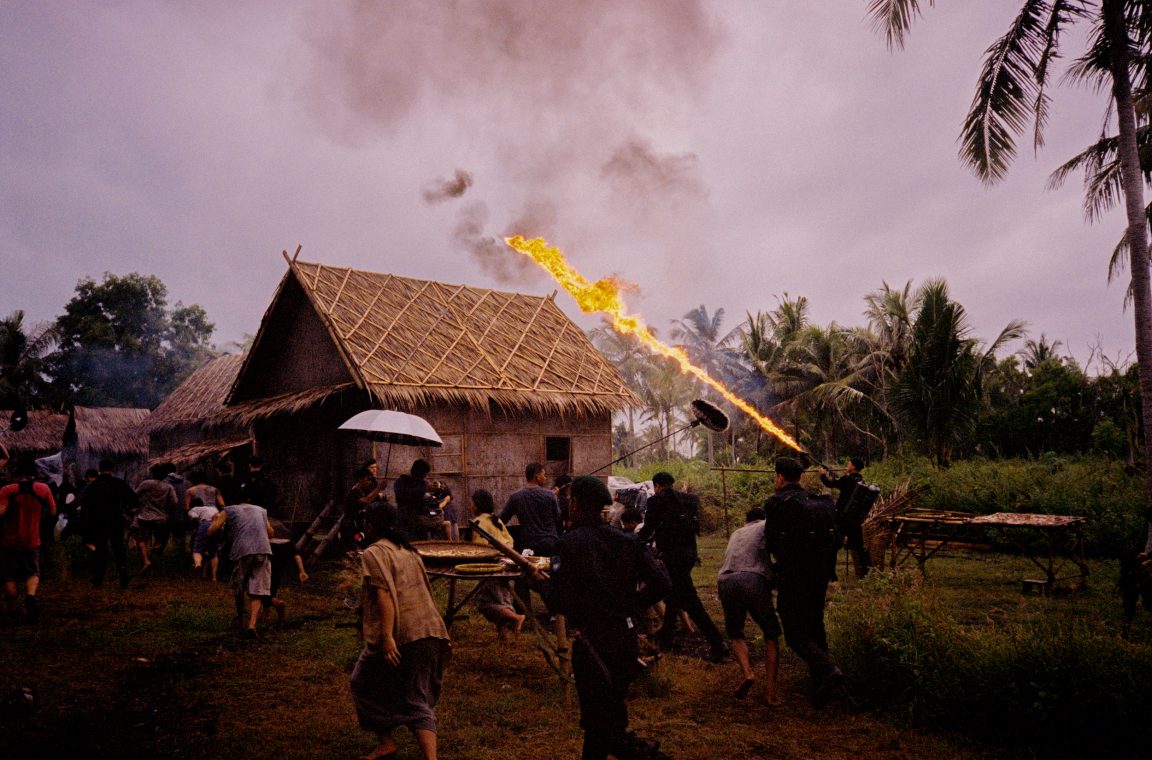IN DE OOST
by Milan van Dril

Milan van Dril’s IN DE OOST will be one of our favorite publications of 2021. The project with behind the scenes photography was released as part of the extensive campaign for the polarizing Dutch war movie De Oost (The East). A first of its kind, in the tradition of the great American anti-war films, De Oost portrays the 1945 – 1949 Indonesian War of Independence through the eyes of a disillusioned Dutch soldier. A subject matter that hadn’t made it to the Dutch cinemas yet, because it ended 350 years of Dutch colonial rule in South-East Asia in a rather shameful manner. IN DE OOST presents a selection of analogue imagery by one of our favorite young Dutch photographers, who has created a time capsule of the set that erupted in Indonesia during the first half of 2019.
In his images we see the enormous (by Dutch’ production standards) and precarious (because of the history it depicts for the first time) film endeavour , which eventually succeeded in its mission by creating major cultural impact in the Netherlands after its release in May of 2021. To see this succes happen is somewhat of a miracle as misfortune haunted the production in all stages of the proces, ending with the pandemic that forced it to be released via Prime Video’s VOD streaming platform. In the end, the film and its accompanying educational project served as a major catalyst that finally sparked wide public discussion that remained mostly unspoken for all those decades, despite more than 2.000.000 people currently living in The Netherlands having ties to this history and Indonesia as a country. The photographs of Milan take you directly into the intens heat of the set, where history was still being made through the blood, sweat and tears of a very dedicated group of people, who wouldn’t be stopped by scorpion stings, flash floods or the daily surveillance by the Indonesian military.
We asked Milan for some quick reflections on his experiences behind the scenes of De Oost that eventually resulted in his publication IN DE OOST:
What did you learn while being on the set of a film about The Netherlands’ colonial past in that particular ex-colony?
Actually, I hardly knew anything about the period which the film portrays. At school, the Second World War was discussed at length, but this black page of Dutch history was not included. In the short time that I had in preparation of the shooting period, I tried to read as much as possible about this history. Judging by all of the commotion and the emotional reactions the film received, I think the film has finally brought an important unspoken collective wound into the Dutch visual history. IN DE OOST also contributes to that in its own way, I hope.
How have you changed personally after 5 months in Indonesia?
As a photographer on set, I was close to the Director of Photography [Lennart Verstegen] and the Director [Jim Taihuttu], which gave me the opportunity to witness their creative process up close. I learned a lot by just observing. Furthermore, I also had a lot of freedom to create my own aesthetic for the photography within the cinematic universe they created. I was able to find the stories I wanted to tell through imagery.
This freedom also allowed me to slowly become part of the platoon of soldiers that the film revolves around, or hang out with Dutch extras during takes, which became two important themes in the publication.
What do you take away as a photographer/director?
Most of my photography was in service of marketing for the film, which demands a straightforward way of working capturing the mood of the film itself. With my analogue photography, that was exclusively used for the publication, I wanted to show a deeper layer. I approached it almost like a travel diary. This gave me the opportunity to show the process behind the film and represent the ‘adventure’ that could be found in the different levels of the complete endeavour. A few weeks into the process, I also became aware of the emerging parallels between the experiences of the Dutch extras on the set [about 80 teenagers] and what the original young soldiers must have experienced when they were sent to Indonesia in 1946. Seeing these moments in which fiction and reality were intertwined fascinated me deeply. It intrigues me to this day.
IN DE OOST is your first book, how did you experience the creative process for that medium?
Curating a limited selection of photographs for a book with limited pages was a new process for me. I learned an incredible amount from it. Creating a red thread from an enormous pile of photos was perhaps the biggest challenge. I also developed the ambition to make the book more eclectic, beyond just photography, by adding elements like script pages, or stamps that for me symoblize the beginning and end of the colonial period in Indonesia. In the end it all came together nicely.
I hope the book documents the essence of this journey through which De Oost was created and that people will use it to look back on it in the future to come.
How do you see your future?
In the near future I want to make more film projects from a director’s role. But at the same time, I still want to continue working in imagery for different media outlets (visuals for live shows, music videos, short films). Approaching every project as a blank canvas in search of the best possible platform for a certain kind of still and moving imagery is something I find most interesting to do. In addition, I will never give up my work in ‘classic’ photography. IN DE OOST showed me that photography for print is something I want to explore more.














